Blackmailed into emigration | DECEMBER 29
The large-scale arrests of Jewish men during the November Pogroms – around 30,000 were incarcerated at the Sachsenhausen, Buchenwald and Dachau concentration camps – fulfilled its purpose: it served to blackmail Jews into giving up on their remaining assets and emigrating. Among the 10,911 Jews held in Dachau alone were Georg Friedmann, owner of a fashion shop in Schwandorf (Bavaria) and his son, Bruno. Lillian Friedman, his wife, lost no time. Already in November, with her husband and son still incarcerated, she went to the travel agency of the Hamburg-America-Line in Munich for a consultation, which was followed by an intensive correspondence. Thanks to a wealthy relative in New York (who had heard about them for the first time in this context), they had received an affidavit. The plan was to travel to New York via Cuba. On December 29th, the Hamburg-America-Line issued a receipt to Mrs. Friedmann for the passage from Hamburg to Havanna of her son, Bruno, and her mother-in-law, Amanda Friedmann.
Stolen art | DECEMBER 25
Jewish furriers began to do business at the Leipzig Trade Fair in the middle of the 16th century. For hundreds of years, Jewish traders were allowed into Leipzig only during the fair, but even so, they significantly contributed to the city’s wealth. In the wake of the legal equalization of the Jews in the 19th century, Jewish furriers began to settle in Leipzig, concentrating on a street known as Brühl. Over time, Jews helped to turn the city into an international center of the fur trade. After 1933, many Jewish furriers fled to centers of the trade abroad. Siegmund Fein, born in Leipzig in 1880, was still in Leipzig in 1938. His and his wife’s ordeal under the Nazis culminated during the November pogroms. Siegmund Fein was incarcerated at the Buchenwald concentration camp from November 11th to 30th and badly maltreated. After his release, he was refused appropriate medical care. On December 20th, he fled to Brussels. The painting displayed here, “Head of a Girl” by the German classicist painter Anselm Feuerbach was confiscated by the Nazis – along with other works of art from the Feins’ collection.
No respite for Jews at German spas | DECEMBER 22
Already in the late 19th century, hostility towards Jews was common in German spas, some of which advertised themselves as “free of Jews.” In the Baltic and North Seas, entire islands presented themselves as anti-Semitic. Nevertheless, some had a small Jewish population. On the beaches of the North Sea health resort of Wangerooge, swastika flags were displayed as early as 1920, just after becoming the symbol of the Nazi party. When the Nazis had been voted into power, the situation became even harder for the island’s Jews. On December 22nd, 1938, Fritz Jacoby, himself a beneficiary of the work of the Boston Committee for Refugees and a recent arrival to the United States, turned to Willy Nordwind, its co-chair, on behalf of Marga Levy, a 24-year-old native of Wangerooge. In the wake of the pogrom of November 9-10, all of her male relatives had been incarcerated, there was no money and no way to make a living. Thus, the grateful Mr. Jacoby implores the Committee to provide the young woman with a “domestic affidavit” which would enable her to “work day and night to feed her parents.”
Emigration as a condition for release | DECEMBER 20
On November 10th, in the course of the pogroms sweeping the entire Reich, Ernst Aldor, an electrical engineer, was arrested in his own home in Vienna for the crime of being a Jew. He was deported to the Dachau concentration camp 366 kilometers west of his home town. On December 9th, he was released. During the period of his incarceration, his wife Renée received an entry permit for Bolivia and a telegram from her cousin, Emil Deutsch, in America, confirming that an affidavit was being prepared. Australia was a third option the couple had considered as a place of refuge. To prepare for emigration, Renée Aldor, a native of Hungary, procured this document from the registry office at police headquarters in Vienna, dated December 20th, listing all her residences in the city since 1920.
Total arbitrariness | DECEMBER 16
One of the tools in the hands of the Nazis to terrorize Jews was arbitrary incarceration: the Enabling Act of March 24th, 1933, handed the regime the legal basis for the perfidious institution of “protective custody”: persons deemed to “endanger the security of the people” could be detained without concrete charges. Ostensibly, the policy was aimed at political adversaries. In fact, however, it was frequently used against Jews. The salesman Hans Wilk was among its first victims: in 1933, at 24 years of age, he spent over four months at the Lichtenburg concentration camp. During the November pogroms of 1938, he was among the roughly 30,000 Jewish men incarcerated in concentration camps. On December 16th, he was released from the Sachsenhausen concentration camp in Oranienburg near Berlin. The requirement to report immediately to the State Police in his home town of Potsdam indicated that the harassment was not yet over.
At least the children | DECEMBER 14
Even the total defenselessness of German Jews in light of the acts of violence perpetrated during the November pogroms did not lead to an adjustment in international refugee policy that would be worth mentioning. Therefore, the Jewish Agency for Palestine had demanded from the British to permit the immediate immigration of 10,000 Jewish children to Palestine. As reported by the Jewish Telegraphic Agency on December 14th, the British Mandatory Authorities viewed such a step as a danger to their diplomatic balancing act vis-à-vis the groups involved and rejected the request. It did, however, agree to temporarily admit them to England. Many Jewish parents were ready to make the painful decision to send their offspring abroad on their own, in order at least to spare them the constant hostility and the physical danger. Already before the attempt by the Jewish Agency, in November, the government had given the green light to the immigration of 5,000 unaccompanied children under the age of 17. The first group of children had gone to England at the beginning of December.
With the blessings of the Nazis | DECEMBER 13
Until 1938, dozens of Jewish periodicals managed to withstand the mounting pressure of the regime. However, even since 1935, they were no longer publicly for sale, and since 1937, their freedom of reporting had been severely curtailed. After the Pogrom Night of November 9th to 10th (later known as “Kristallnacht”), a comprehensive prohibition brought the over-130-year history of the Jewish press in Germany to an abrupt halt. In order to be able nevertheless to spread official communiques through a paper aimed specifically at Jews, a Jewish newsletter, the “Jüdische Nachrichtenblatt” was established, the first issue of which was published on November 23rd in Berlin. Albeit edited by Jews, it was under total control of the Reich Ministry of Popular Enlightenment and Propaganda. On December 13th, the Vienna edition appeared for the first time.
Banks as accomplices | DECEMBER 4
As double earners, the Nathorffs did quite well materially for a number of years: the pediatrician Hertha Nathorff was the director of a children’s home and baby nursery run by the Red Cross in Berlin Charlottenburg, and her husband, Erich, was an internist at the Moabit Hospital. On the side, the couple had a private practice. Shortly after the Nazis came to power, both lost their positions, but they maintained their joint practice until September 1938, when the licenses of all Jewish physicians were revoked. Erich Nathorff was among the few Jewish physicians who were allowed to tend to the needs of Jewish patients exclusively as so-called “caretakers of the sick.” However, during the November Pogroms, he was incarcerated at the Sachsenhausen concentration camp. On December 4th, Hertha Nathorff confided to her diary that due to the insecure situation, she had “sent away” her son and that she was having financial problems. Due to the Nazis’ policy of blocking the accounts of Jews whose financial situation would have permitted them to leave the country, she had no access to her money.
Action, not anger | DECEMBER 3
Reacting to the November Pogroms, thus far the most massive outburst of anti-Jewish violence in Germany, the December editorial of the Aufbau does not make do with expressions of pain and mourning but forcefully calls to counter Nazi brutality with positive action. “The answer to barbarism has always been enlightenment,” it quoted US Commissioner of Education J.W. Studebaker, a staunch believer in democracy and the central role of public discussion and civic education in making it function. The editorial reassured Jewish brethren in Germany that all of America was united in working on “putting an end to barbarism in Central Europe.” It wholeheartedly endorsed the government’s position, propagating education and enlightenment as means to fight back “this gravest of assaults on human culture.”
Kindertransport | DECEMBER 2
Following the November Pogroms, individuals and groups in England, among them faith-based organizations, demonstrated through their relentless refugee advocacy and organizing how effective determined action by citizens can be. Among those who lobbied the British government specifically on behalf of Jewish children was the Society of Friends (Quakers). After initial rejection by Prime Minister Chamberlain, a delegation composed of Jews and Quakers met with Home Secretary Hoare, following which the government gave permission to issue visas and facilitate the children’s entry into the country. Within the shortest time, host families were recruited, donations solicited, tickets booked, transit visas organized (the children traveled via Hoek van Holland). The network of Jewish and non-Jewish helpers included Dutch volunteers who welcomed the children at the border, gave them food and drink and accompanied them all the way to the ship in Hoek van Holland. The first group arrived at Harwich on December 2. The organized efforts to rescue Jewish children from Nazi Germany later came to be known as “Kindertransport.”
Last resort: emigration | DECEMBER 1
Sent to take stock after the November Pogroms in Germany, the American Joint Distribution Committee’s emissary to Germany, George Rooby, traveled to several cities to collect first-hand impressions. His findings were deeply disturbing: Berlin, Nuremberg, Fürth, Frankfurt-on-Main, no matter where he went, he saw synagogues burnt down, Jewish shops demolished and ransacked, Torah scrolls desecrated, and was met by terror-stricken Jews whose leadership had been forbidden to operate or taken to concentration camps. Non-Jews extending a helping hand exposed themselves to the danger of Nazi reprisals. The almost complete absence of small children and babies was explained to Rooby as a result of the fact that nativity among Jews had receded considerably since the Nazis’ accession to power. Leaders of Jewish communities had assured him that there was enough money to cover immediate welfare needs. Those organizations, however, whose goal was to advance emigration, were facing a serious lack of funds. Generally, hope prevailed that the Reich Representation of Jews in Germany would soon be allowed to operate again and play its part in accelerating emigration. Its success, of course, depended on the willingness of other countries to receive German Jews. Rooby’s conclusion was unambiguous: the only hope to escape the violence was emigration.
Painful uncertainty | NOVEMBER 30
Many Jews in Germany reacted to the November pogroms with despair, existential fear, and even suicide. But the situation was also highly vexing for those who had managed to flee abroad. From afar they had to watch how their synagogues went up in flames, how Jews were arrested by the thousand and locked up in concentration camps, how Jewish property was stolen or destroyed. The worst, however, was the uncertainty about the well-being of beloved relatives and the torture of not being able to help them quickly enough or at all. One of the many emigrants expressing such feelings was Erich Lipmann. In this letter from Ohio to his mother and grandmother in Lower Saxony, he describes his helplessness but also mentions efforts to get support from official places.
Their only hope | NOVEMBER 29
In 1903, in the wake of the Kishinev pogrom, the British government agreed to allow European Jewish settlement in a territory then known as the “East Africa Protectorate,” today’s Kenya. Due to massive opposition from within the Zionist movement, the plan, known by the misleading name “Uganda Scheme,” did not come to fruition. 35 years later, Paul Egon Cahn, most recently a resident of Cologne, found himself in Rongai, Kenya. After the November pogroms, the 20-year-old car mechanic began to try to get his parents out of Germany. While European settlers and members of the local Indian community in Kenya opposed the immigration of Jewish refugees, the “Kenya Jewish Refugee Committee,” which had facilitated his immigration, was supportive. Thus, the young man turned to its secretary, Israel Somen, for help: he urgently needed the £100 the British Colonial Office charged for two entry permits.
Help among friends | NOVEMBER 28
Willy Nordwind, co-chair of the Boston Committee for Refugees, tirelessly endeavored to save Jews from the grip of the Nazis by helping them immigrate to the United States. Himself an immigrant from Germany and familiar with the requirements, he helped organize affidavits and saw to it that newcomers with fields of expertise as heterogeneous as “tobacco and clothing retail business,” “tourism,” “expert buyer and salesman of hosiery,” and “wholesale fish dealer” found employment in America. Most of the people he helped were total strangers to him, but some of his beneficiaries were personal acquaintances. On November 28th, 1938, his friend Seppel pleads with Nordwind to find a special arrangement for him that would speed things up. Requests for visas had risen sharply since the pogrom night of November 9th to 10th (later known as “Kristallnacht” or “Night of Broken Glass”), and the usual waiting period for the processing of affidavits was far too long.
An unexpected gesture | NOVEMBER 27
Thanks to his thriving practice in the Steinbühl neighborhood of Nuremberg, Dr. Adolf Dessauer had achieved a certain prosperity. His generous apartment offered a children’s room for his sons, Heinz and Rolf, maid’s quarters, space for his practice and a waiting room, a living and dining room, and, not least, a bedroom with furniture made of cherry wood. In 1937, due to the effects of anti-Semitic legislation targeting doctors, Dr. Dessauer was forced to give up his practice. Emigration was the only solution. But how to take the beautiful bedroom furniture abroad? The Nazis rendered this concern obsolete: During the November pogroms, in the night of November 9 to 10 (later known as “Kristallnacht” or “Night of Broken Glass”), the furniture was smashed to pieces and a portrait of the Nobel laureate, Paul Ehrlich, slashed and ruined. Only a few days after the shock of the brutal destruction, the Dessauers experienced a rare gesture of decency. A total stranger returned the portrait, which was by now perfectly restored.
The future of humanity and culture | NOVEMBER 26
No one reading the November issue of the Aufbau could have missed the front-page editorial message in bold print: under the heading “The Great Trial,” forceful language is employed to decry the abject failure of “the heads of state of the so-called democracies,” who have sacrificed Czechoslovakia to Nazi Germany. Jewish refugees are left stranded in no man’s land in Bohemia, in Germany, the Nazis are dealing an “economic death blow” to the Jews, the British are jeopardizing the Zionist project, and “little more than a faint memory” remains of the Evian Conference, summoned in July to tackle the problem of resettling Jewish refugees from Nazi Germany. Surely, this is “an era of complete sinfulness.” Will those under threat finally brace up?
The limits of hospitality | NOVEMBER 25
The news of the brutal acts of violence perpetrated against German and Austrian Jews during the November pogroms sent shockwaves through Jewish communities. On November 15, a group of Jewish leaders in Britain requested that their government grant temporary shelter to Jewish youngsters who were to be returned to their countries later on. On November 25, the Jewish Telegraphic Agency reported on the planned opening of a camp for 600 child refugees from Germany on the east coast of England. The British chapter of the World Movement for the Care of Children from Germany was to recruit families to offer foster homes for 5,000 children. The plan had government approval – provided the children were under 17 years of age and the costs of their support would not be a burden to the public.
Art in crates | NOVEMBER 24
Had Austria’s history taken a normal course, Hanna Spitzer, a private teacher, would probably have stayed in Vienna and grown old there as a respected member of society. As a daughter of the late jurist and patron of the arts, Dr. Alfred Spitzer, she was co-heir to a major art collection comprising works by such greats as Kokoschka and Slevogt. Egon Schiele was represented too – among other works, with a portrait of Alfred Spitzer, who had been his sponsor and lawyer, and later his estate trustee. But the flood of anti-Semitic measures which had been unleashed by the “Anschluss” (the annexation of Austria to Nazi Germany) made it unbearable and dangerous to stay: this copy of a tax clearance certificate dated November 24, 1938 testifies to Hanna Spitzer’s efforts to gather the papers required for emigration. Already in January, she had arranged for the shipping of 11 containers of household effects and paintings to Melbourne and a delivery to the address of her sister, Edith Naumann, in Haifa.
Placing trust in strangers | NOVEMBER 23
Could Willy Nordwind of the Boston Committee for Refugees—an organization not dealing specifically with unaccompanied child immigrants—be entrusted with the well-being of a 16-year-old girl? The Relief Organization of Jews in Germany was not ready to take chances: rather than just sending Frieda Diamont on her way, the organization turned to the National Council of Jewish Women in New York to ascertain Mr. Norwind’s integrity. The Council’s Merle Henoch passed on the case to Jewish Family Welfare in Boston, Mass., where Nordwind, too, was based. For her there was no doubt: as generous a helper as Willy Norwind must be a trustworthy ally.
Banned from his art | NOVEMBER 22
The works of the Expressionist painter and graphic artist Bruno Gimpel were classified as “degenerate” during the Third Reich. Neither his voluntary service as an aide in a military hospital during World War I nor his “mixed marriage” with an “Aryan” woman spared him the usual repressive measures. On November 22nd, 1938 he received a letter from the Reichskammer der Bildenden Künste, the Nazi authority in charge of the visual arts, which yet again denied him membership and banned him from all branches of his profession. In 1935, this institution of the Third Reich had once before rejected a request for admission by the Dresden artist. Since 1937, he had no choice but to make a living by giving drawing lessons to Jewish children.
For all eternity | NOVEMBER 21
Among the over 1,400 German synagogues destroyed on and around the pogrom night of November 9th to 10th (later known as “Kristallnacht” or “Night of Broken Glass”) was the Semper Synagogue in Dresden, named after its architect. While neo-Romanesque on the outside, the building featured an interior in Moorish Revival Style – a design imitated by numerous other architects of synagogues in Germany. When the building was burnt down by both the SA and SS, 98 years had passed since its festive opening in 1840, at which Rabbi Zacharias Frankel had consecrated it to the service of God “for all eternity” and extolled the “respect for religious freedom inspiring this people.”
New hope for help | NOVEMBER 20
For 19 years, Fritz Feldstein had been working at a bank in Vienna to the full satisfaction of his superiors. But, in 1938, after Nazi Germany annexed neighboring Austria, he lost his position. On July 5th, the family registered with the US consulate in Vienna, but for immigration, affidavits were needed. After months of deeply upsetting political changes, Fritz Feldstein ventured an unusual step. On Oct. 16th, he turned to a Julius Feldstein in Los Angeles who, he hoped, might be a relative, appealing to “the well-known American readiness to help.” Soon, a correspondence developed, also involving Fritz’s wife, Martha, and their daughter, Gerda. The 11-year-old was not only a skillful piano player, she obviously also had a knack for languages. On November 20th, she writes to the Feldsteins in California for the first time – in English.
What is already bad gets worse | NOVEMBER 19
The Intrators had been forced to flee once before: the anti-Jewish climate in their native country, Poland, had caused Rachel (Rosa) and Jakob in 1905 to make Berlin their home. Their son Alexander, born the same year, later became a successful concert violinist. Gerhard, five years his junior, went to law school, but the Nazis had hardly been brought to power when they began to systematically push Jews out of the legal professions. In light of the hopelessness of pursuing a juridical career in Germany, the 27-year-old emigrated to the US in 1937. Now he was making massive efforts to bring his parents. On November 19th, his father reported on the arrival of the affidavit which was needed for immigration. However, he added, they did not expect to receive their visas any time soon. Meanwhile, their circle of relatives and friends was getting smaller and smaller. Some were being forced by the Nazis to return to Poland, others simply disappeared.
Where is Paul Weiner? | NOVEMBER 18
Willi Jonas and his wife Hilde owned a shoe shop in tranquil Basel, Switzerland. Deeply worried about their relatives in Germany, Willi Jonas sent his Swiss chauffeur to sound out the situation. In a November 18th, 1938 letter, the couple tell emigré friends in America about their loved ones’ experiences during and since the night of pogroms (later known as “Kristallnacht” or “Night of Broken Glass”). Louis Jonas, a cattle dealer in Waldbreitbach near Neuwied, has gotten away without material losses. However, after having had to spend 4 days in jail and being released only due to the fact that he is above 50, all he wants is to get out. The news from Worms is even more alarming: Paul Weiner has been taken to a concentration camp and nobody has seen fit to notify his wife, Berta (née Jonas), as to which. The couple’s home was almost entirely wrecked, some of their property stolen.
No reprieve | NOVEMBER 17
Whoever had hoped that peace and quiet would return after the pogroms on and through the night of November 9th to 10th (later known as “Kristallnacht” or “Night of Broken Glass”) had been mistaken. In its November 17th dispatch, the Jewish Telegraphic Agency gives account of a new wave of arrests and violence. The initial round of violence had been orchestrated to look like a spontaneous outburst of popular rage after the assassination of an employee at the German Embassy in Paris, Ernst vom Rath, at the hand of a 17-year-old Jew. The pogrom was followed by a series of legislative measures eliminating Jews from commercial life in Germany and forcing them to “restore the streetscape” after the arson attacks on synagogues and the destruction of Jewish businesses. Apparently, the diplomat’s funeral in Düsseldorf was now serving as a subterfuge for renewed violence. The US consulate in Berlin was flooded by Jews seeking asylum for fear of additional assaults—in vain, as the article states.
Just help—no matter from where | NOVEMBER 16
Martha Lippmann, the widow of a wool merchant in Stolzenau/Weser in Lower Saxony, and her mother were the last family members left behind in Germany when the November pogroms (later known as “Kristallnacht” or “Night of Broken Glass”) ravaged German Jewry. Her daughter, Gertrude, fled to Belgium; her older son, Erich, to America; and her younger son, Hans Martin, to England. News of the wave of anti-Jewish violence increased the urgency with which emigrants attempted to intercede on behalf of loved ones left behind in Germany. In a letter dated Nov. 16th, Max Stern, Gertrude’s husband, tells Erich about a planned appointment with a Belgian lawyer on behalf of Martha Lippmann, the goal of which is to obtain a temporary visa for her. Erich himself had contacted William Dodd, the former US Ambassador to Germany, thanks to whom he himself had made it to the US. But so far this appeal was to no avail.
A sensitive eccentric | NOVEMBER 15
In this watercolor portrait of a young girl, we do not see the artist John Hoexter’s familiar acerbity but rather a much gentler side. The Expressionist and Dadaist was a leftist activist and idealist and was not very good at making money. For years he contributed to the magazine “Der blutige Ernst” (“Bloody Earnest”), which disseminated undogmatic leftist thought with the help of first-rate contributors who were not paid for their efforts. Hoexter’s financial situation also was not helped by the fact that in trying to control his asthma, he had gotten addicted to morphine early in life. In addition to his considerable artistic talent, he was forced to develop his skills as a “shnorrer.” He was at home in the Bohemian circles frequenting places like the “Cafe Monopol” and the “Romanisches Cafe.” After the Nazis were handed power in 1933, Hoexter’s leftist circle of friends shrank more and more, which, along with the ongoing debasement of Jews by the regime, did not fail to take a toll on him. Under the impact of the violence experienced during the night of pogroms (later known as “Kristallnacht” or “Night of Broken Glass”) Hoexter committed suicide on November 15th.
Shattered splendor | NOVEMBER 14
On August 13th, 1869, the synagogue on Michelsberg in Wiesbaden had been officially opened in a festive ceremony. The building was meant to serve the increased spatial needs of the congregation but also testified to its increased wealth and civic self-assurance. In the presence of representatives of other faith communities, Rabbi Süskind had referred to the liberal house of worship as a “planting ground for patriotic virtues” which was to prove its unifying power not only within the circle of one’s own co-religionists, but “also in the wider circles of humanity.” After the pogrom that took place through the night of November 9th into 10th, 1938 (later known as “Kristallnacht” or “Night of Broken Glass”), all that was left of the magnificent building in Moorish-Byzantine style was the external wall. The interior was entirely gutted.
A slide back to barbarism | NOVEMBER 13
As the Jewish Telegraphic Agency would have it, the English were united in their dismay about the anti-Jewish violence in Germany. Expressing their “indignation and disgust” and referring to the recent anti-Jewish violence in Germany as a “slide back to barbarism” and “inhuman fury,” they condemned the pogroms orchestrated by the Nazis. Some, like the Sunday Times and Sir Archibald Sinclair, leader of the Liberal Party, used the events as an opportunity to reinforce the need for a national home for the Jews.
Not a trace of uncle Arthur | NOVEMBER 12
Harry Kranner was a boy of 12 when the Nazis staged a wave of anti-Jewish violence unprecedented in scope and intensity – purportedly a “spontaneous outburst of popular rage” in reaction to the murder of an employee of the German embassy in Paris at the hand of a young Jew. However, Harry’s diary entries show that he was keenly aware of the events around him. In the early morning of November 10th, when the violent events of the night spilled over from Germany into Austria, two Gestapo officers had come to the family’s home in Vienna – ostensibly in search of weapons. Harry understood how extraordinarily lucky he was to have gotten away with nothing more than a scare. He had heard about Jews being locked into or out of their apartments. But one big worry remained: by November 12th, there was still no trace of his uncle Arthur, who had been arrested along with thousands of other Jews. Following a news report that all arrestees were to be deported to the Dachau and Mauthausen concentration camps from the Vienna Westbahnhof, Harry’s father and aunt rushed there, hoping to find uncle Arthur, but to no avail. Meanwhile, it was reported that the Jews were going to be charged a hefty penalty for the violence to which they themselves had fallen victim.
Arson | NOVEMBER 11
As Jews in Chemnitz were struggling to come to terms with the brutal violence they had experienced two days before – the magnificent synagogue had been set on fire and destroyed during the November Pogroms, in the night from November 9 to 10 (later known as “Kristallnacht” or “Night of Broken Glass”), and 170 members of the community deported to the Buchenwald concentration camp – the community’s representative, the merchant Josef Kahn, was contacted by the town’s mayor. With mind-boggling cynicism, he demanded the removal within three days of the ruins of “the synagogue […] which caught fire in the night from November 9th to 10th, 1938.” If the order wasn’t carried out within the prescribed time, the municipal building inspection department (Baupolizei) would arrange clearance at the owner’s expense.

